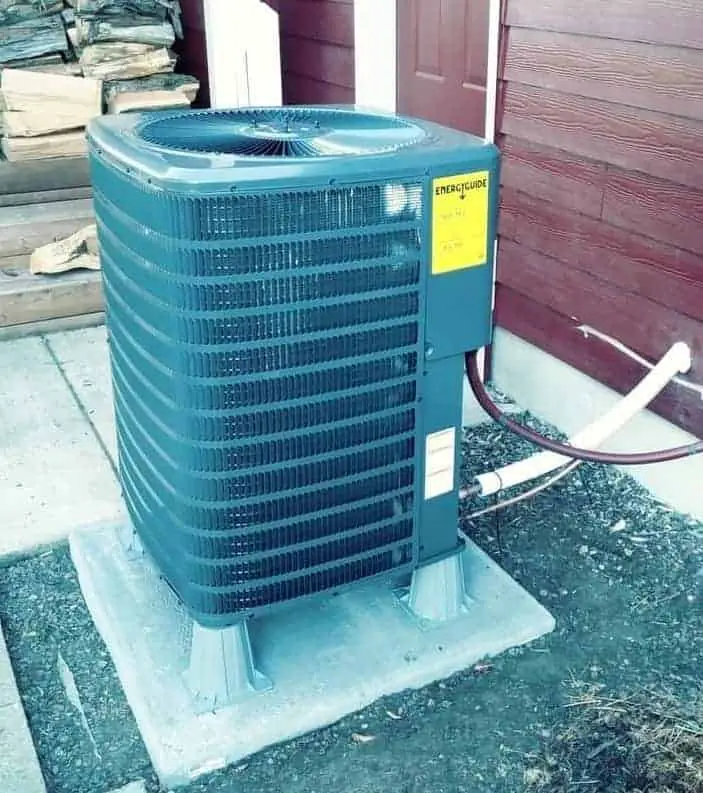What does “split system air conditioner” mean? It means that your system has basically two parts. It’s one system split in two. An indoor unit and an outdoor unit that are connected with copper tubing, also called refrigeration lines. Split system air conditioners or heat pumps come in two basic designs.
- A full size system has an indoor furnace with duct work and an outdoor unit that could either be an air conditioner or a heat pump.
- Mini split (ductless) air conditioners or heat pumps are also called a split system.
If your system is a heating only system with just a furnace in a basement, a closet, or in the attic, then you don’t have a split system. If you added a heat pump or an air conditioner, then you would have a split system.
Split systems have part of the equipment outside. For an air conditioner it’s called a condenser, but for a heat pump, to eliminate confusion we call it an outdoor unit. If you care to know why, I gave a guided tour on how a heat pump works.
So what does a split system AC mean? Or a split system heat pump, well they look like this:
And the system inside that you probably refer to as a furnace, but those in the industry would call an air handler because it moves or handles the air in the duct work and throughout the home………..
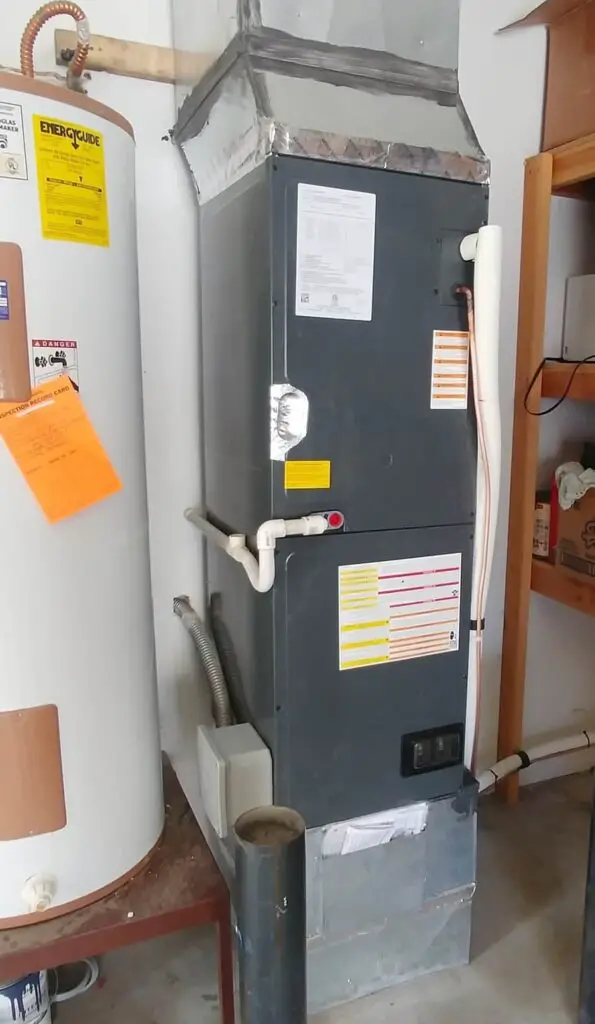
What Is A Package Unit Air Conditioner?
One reason split systems have that moniker is to differentiate them from their cousins, the package unit. A package unit is not split, but has all the components of a split system all in one cabinet.
It sets outside and is connected to the home or business only by the duct work. Package units on a house can be an eyesore. This one is on a roof and it’s days are up soon.
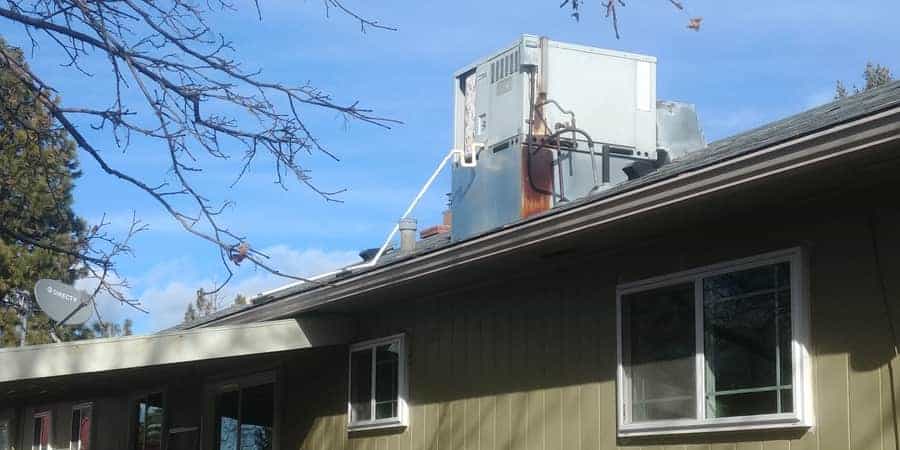
These units can be installed on the side of a home also with the duct work either going into a crawl space or up the side into an attic which can be really ugly.
Which Is Better, A Split System Or A Package Unit System?
We are dividing the industries equipment into basically two categories. If you spend any time at all looking onto or at commercial rooftops you will see primarily what are called package units.
These package systems can and are used in many residential applications, but the negatives of a packaged unit as compared to a split system, make the split a very popular choice in most homes.
With the split system, all the things that move air are more under cover or hopefully in the home. Sometimes the furnace and indoor coil is in an attic, crawl space or in the garage and maybe in a basement.
These locations are better than having the fan that blows the air around your home in the out of doors as it would be with a package unit. Most air handlers or furnaces if you prefer, have a certain amount of air leakage.
Package units are a complete system in one cabinet. Set it on the roof and attach some duct work that goes down through the roof and into the conditioned space.
Not all the air going through a system goes through the filter. Some of it, a small portion, leaks in and out of a furnace in the cracks and the doors of the furnace. New codes today help eliminate most of the air leakage with duct sealing materials.
Over time, these small cracks can suck in a lot of dirt and dust, or whatever.
So the environment that the unit is in will have some responsibility for the quality of the air in your home. Package units set in the out of doors will leak into or suck from their immediate surroundings.
The units and the duct work will accumulate that stuff. Hence, they require more maintenance.
One of the main benefits of a packaged HVAC unit is that all servicing can be done at the roof level. Technicians rarely have to enter a business to make repairs or do periodic maintenance.
So the split system is connected, but only by the copper tubing that contains the Freon used to move heat.
I say move heat, because that’s what an air conditioner or a heat pump does. You might think that an air conditioner makes cold air, but it actually moves heat from in the house to the out of doors.
With a split system the indoor and outdoor units are connected by copper tubing which hold refrigerant (Freon) and the low voltage wiring that controls the units from your thermostat.
Ductless Mini Split System Versus Package Terminal Unit Or PTAC
PTAC’s and mini splits are the same concept as package units and split systems. Nearly all of us have stayed in a motel or hotel at one time or another. PTAC is an acronym for Package Terminal Air Conditioner. Those units under the window with the little door you lift up to turn it on or off and set the temperature.
Noisy aren’t they! Compare those PTAC’s to a package unit on a roof. It’s all contained. All of a PTAC’s components are in a package in the wall. Man they are noisy. You’re lucky to get any sleep at all with those things blaring.
Mini splits are awesome. They are undoubtedly the quietest, most efficient piece of heating and cooling equipment on the market for the price. They are called mini splits for the same reason as their big sister the fully ducted split system. An outdoor unit like the one below……..
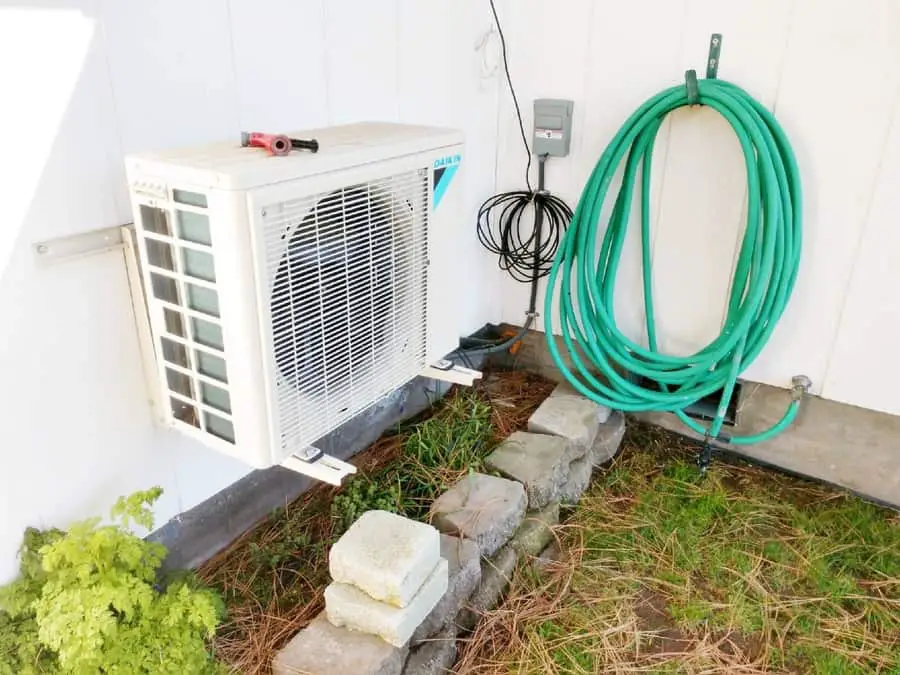
Mount one of these somewhere outside the home and run some refrigeration tubing over, under, or through the house to an indoor unit, and by the way, mini split lines can run up…………..
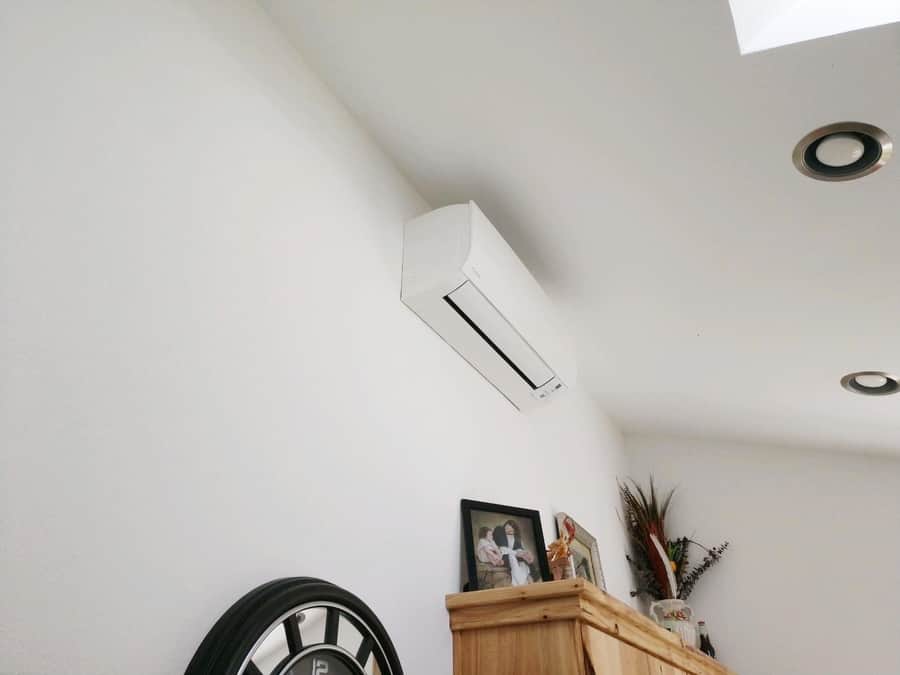
A Little Split System History
Before air conditioning we had no split systems. Makes sense, right.
In the 1840s, physician and inventor Dr. John Gorrie of Florida proposed the idea of cooling cities to relieve residents of “the evils of high temperatures.” Gorrie believed that cooling was the key to avoiding diseases like malaria and making patients more comfortable, but his rudimentary system for cooling hospital rooms required ice to be shipped to Florida from frozen lakes and streams in the northern United States.
Enery.gov
But Dr. Gorrie failed because of a lack of funding. But he opened a door for Willis Carrie over 50 years later.
Willis Carrier was the inventor of the air conditioner. Like a lot of other inventions, Willis wasn’t trying to invent something to cool your home.
He was trying to control humidity. Willis Carrier was a skilled engineer. He was trying to figure out how to lower the humidity in a print shop in Brooklyn, New York.
Imagine the damage that humidity can do in a print shop, all that paper.
As he began to control humidity, the added benefit was, cooling. Air conditioners remove humidity.
Ever heard of Frigidaire? In 1929 Frigidaire used the technology of refrigeration developed by Carrier and developed the split system.
The first systems were quite heavy and bulky. As time went on and the value of cooling homes and offices developed
Companies like General Electric and General Motors got on the band wagon and developed smaller units and better refrigerants.
Today we are reaping the benefits of some very brilliant people. I love my air conditioning.

